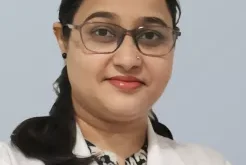The throat’s role in the body is to facilitate the passage of fluids, food, and air. Most of us don’t think about the throat too much until it hurts or feels too dry, especially when it hurts while swallowing food. This is when we scurry around for remedies to fix the problem in our throat. There are many problems that can plague our throat, one of them being Oropharyngeal cancer.
Oropharyngeal cancer is a form of head and neck cancer in which cancer cells are discovered in the oropharynx, the part of the throat at the back of the mouth behind the oral cavity. There are numerous types of oropharyngeal cancer. The vast majority are squamous cell carcinomas, which can be classified into two kinds based on HPV testing.
Symptoms
Oropharyngeal malignancies are frequently asymptomatic. The first sign is usually a lump in the neck. Other signs and symptoms may include
· Mass in the neck
· Difficulty or pain while swallowing
· A sore throat
· A lump or mass at the back of the throat
· Ear pain.
Causes
Factors that increase the chances of developing oropharyngeal cancers include a history of smoking, heavy alcohol use, a history of head and neck cancer, history of radiation therapy to the head and neck or even if a person has an infection of the Human Papillomavirus (HPV), especially type 16.
Early Detection of Oropharyngeal Cancer
For oral cavity and oropharyngeal cancers, there is no routine screening test or program. Nonetheless, many pre-cancers and cancers in these areas can be detected early during routine oral checkups performed by a dentist, doctor, dental hygienist, or self-exam.
● Self-examination: Some dentists and doctors recommend that you inspect your mouth in the mirror once a month for changes such as white patches, ulcers, or lumps. This is especially crucial if you use or have used tobacco, or if you consume alcohol on a regular basis, as you are at a significantly increased risk of developing certain malignancies.
● Regular dental check-ups: Regular dental exams that involve an examination of the entire mouth are critical for detecting oral and oropharyngeal cancers early.
● Use of special dyes or lights: In addition to a clinical examination of the mouth and throat, certain dentists and doctors may employ special dyes or lights to look for abnormal areas, especially if you are at a higher risk of these cancers. One method uses a dye called Toluidine blue. If the dye is applied to an abnormal location, it will turn a darker blue than the surrounding areas. Another method is to use fluorescent light. Light reflected off diseased tissue appears different from light reflected off normal tissue.
● Exfoliated Cytology: If an abnormal region is discovered, it may be evaluated using exfoliative cytology. The abnormal area is scraped using a harsh brush which is called brush biopsy. The scraped cells are transported to a lab to discover if they include pre-cancer or cancer cells.
Treatment
Treatment for oropharyngeal cancer is determined on the basis of various factors, including, but not limited to: the kind of cancer, tumor size and location, lymph nodes, speech and swallow function, and the patient’s overall medical state. The treatment options include a minimally invasive robotic surgery and neck dissection, radiation and chemotherapy.
For early-stage oropharyngeal cancer, the major treatment options are radiation therapy aimed at cancer and the lymph nodes in the neck, or surgery to remove the main tumor as well as the lymph nodes in the neck.
Chemoradiation is frequently performed after surgery if any cancer persists or if there is a high risk of the cancer returning. If imaging or a biopsy reveals that the lymph nodes in the neck have malignancy, chemoradiation may be used as the first treatment.
Oropharyngeal cancer that may have spread to other parts of the body, for example, the lungs is treated with chemotherapy. Immunotherapy, either alone or in combination with chemotherapy, could be another possibility. Treatments such as radiation may also be used to ease cancer symptoms or avoid future complications.
Quitting tobacco and consumption of alcohol is the best way to limit the risk of getting these cancers. If you need help to reduce your risk of this cancer by quitting alcohol and tobacco, you can consult a healthcare professional.
BY: Dr. Nishit Modi, Surgical Oncologist, HCG Cancer Centre Vadodara.
 Newspatrolling.com News cum Content Syndication Portal Online
Newspatrolling.com News cum Content Syndication Portal Online






